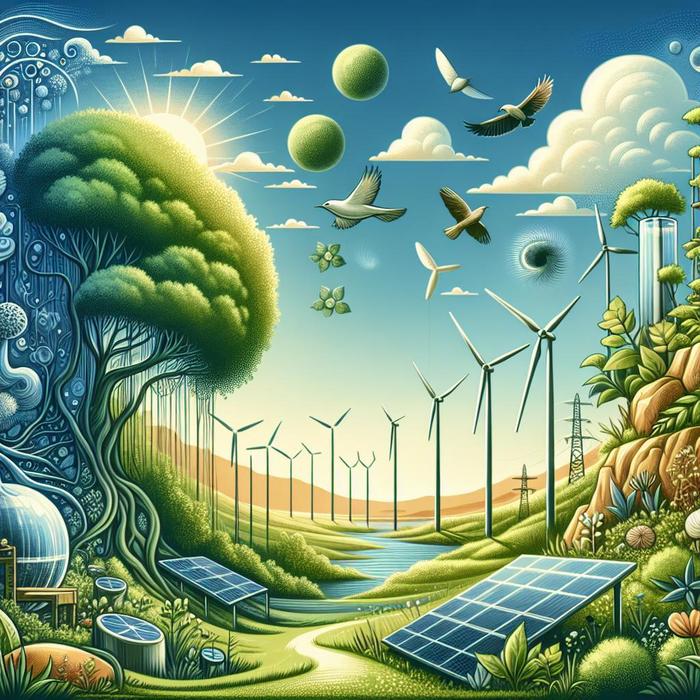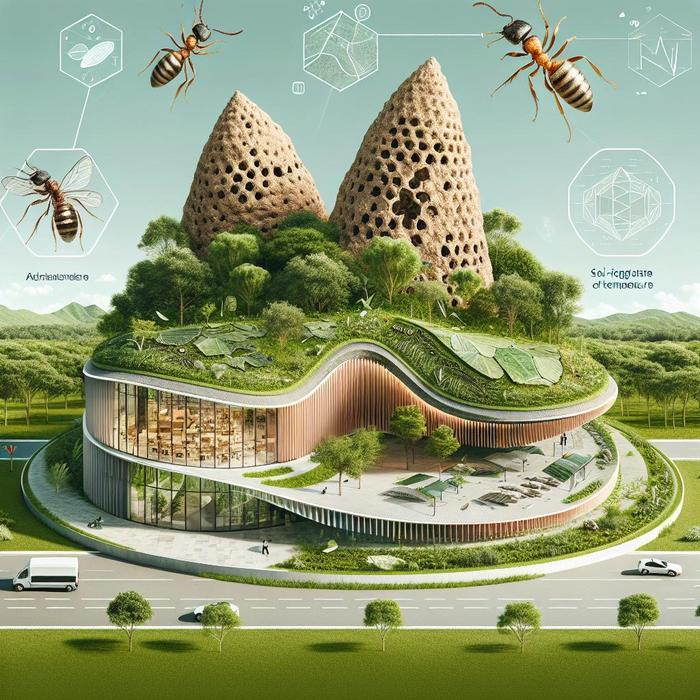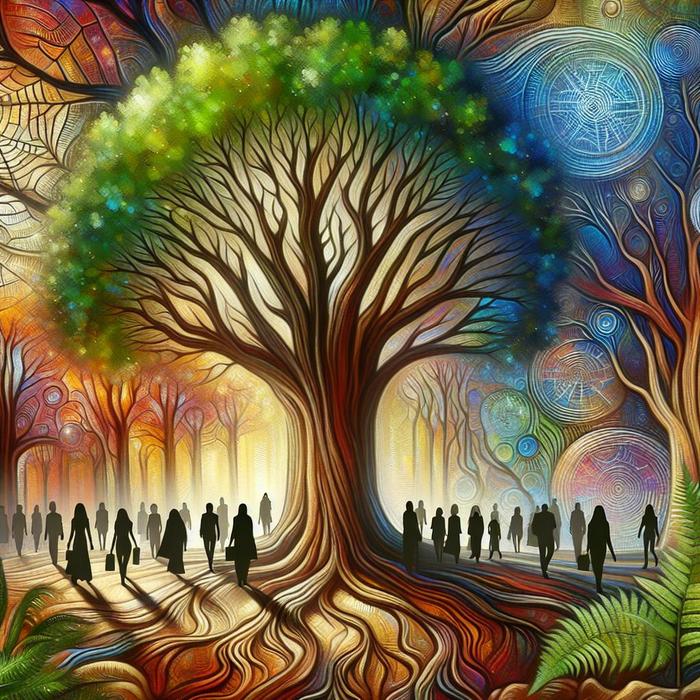Have you ever wondered what the secrets of sustainable energy could be hiding in the natural world around us?
Let us take an in-depth journey into the realm of biomimicry and discover how nature inspires us to develop more sustainable energy solutions.
The Power of Biomimicry
Biomimicry – the practice of observing, learning, and then emulating nature’s genius, has remained an immensely promising field within research engineering. It offers an innovative lens to scrutinize the complex problems we face today. This natural approach not only aims to enhance the efficiency and effectiveness of designs but also promotes sustainability.
Mirroring Mother Nature
In the world of biomimicry, sustainability is not an add-on; rather, it’s inherent. Every part of nature, from the grandeur of elephant herds to the delicate functionality of plant cells, holds potential inspiration for sustainable energy solutions. What can be more efficient and sustainable than nature herself, who has evolved over billions of years to be incredibly effective and balanced?
Pioneering Sustainable Energy With Biomimicry
Harnessing biomimicry for power generation and energy consumption, indeed, revolutionizes the way we operate. It urges us to rethink and redesign our means of energy production, consumption, and management, drawing fascinating parallels with natural processes.
How Biomimicry Inspires Sustainable Energy Solutions
To fully appreciate the impact of biomimicry, let us delve into the practical illustrations in the energy sector. Here are the triumphant tales of nature inspiration in the context of sustainable energy:
Capturing Energy like Plants
Nature’s energy plants convert sunlight into usable energy with remarkable efficiency. Scientists and engineers can learn from their process, designing solar cells and panels that optimize energy capture, just like leaves on a tree.
Mimicking Photosynthesis for Fuel Production
Emulating the process of photosynthesis – the method plants use to turn sunlight into energy – could potentially unlock a clean, green fuel source. This inspiration could lead to a new era of fuel production, that’s not only renewable but also environmentally friendly.
Designing Wind Turbines after Whale Fins
The majestic humpback whale has been an inspiration for creating more efficient, quieter and less deadly wind turbines. The tubercle effect, the bumps on their fins, has been replicated in turbine blades, facilitating a significant increase in energy output.
Does Biomimicry hold the Key to Our Future?
Harnessing biomimicry could indeed hold the key to secure our future on this planet. It’s an innovative pathway to progress without harming our environment. Biomimicry offers us a new vision of creating harmoniously with nature rather than against it.
But the story doesn’t end here. Biomimicry not only influences the way we generate energy but also how we use it. Just as nature does not waste any energy, so should we strive for minimal waste in our consumption patterns. Efficient biomimetic designs and strategies can indeed lead to significant energy savings, ushering in an era of sustainable and eco-friendly energy usage.
From our homes to our cities and industries, biomimicry presents us with extraordinary avenues to reimagine and reinvent the way we live, work and play. So, next time you marvel at the natural world, remember – there’s a lot more than beauty; there’s inspiration, innovation, and a blueprint for a sustainable future.
Have you ever thought about how biomimicry might revolutionize sustainable urban development?
One way of addressing the challenges of thriving in a rapidly urbanizing world is to seek solutions from nature. Taking cues from nature’s brilliance and intricate designs can lead to the sustainable development of our cities.
A peek into the profundity of Biomimicry Architecture
Biomimicry architecture – an innovative approach that studies and imitates nature’s best ideas to solve our own complex human problems – transcends the boundaries of traditional architecture. Through this approach, buildings draw from the physics and biology of natural structures to create more sustainable, efficient, and responsive designs.
Gleaning insights from Termite Mounds
Have you ever observed a termite mound? These intricate structures exemplify natural ventilation systems and thermal control, making them the perfect blueprint for architecture. Recent architectural designs mimic this bio-inspired model, leading to buildings with better air quality, reduced energy use, and an overall smaller carbon footprint.
A Leaf-inspired Building Design
The leaves of a tree, which create their own food through photosynthesis, hold the blueprint for some of the most sustainable architecture out there. A prime example of this concept is a building that functions like a leaf, gaining energy from the sun, reusing CO2, managing water efficiently, and creating a balanced internal climate. Here, the principles of biomimicry are embodied in every aspect of the structure.
Learning Insulation from Polar Bears
Just as the polar bear’s fur insulates itself from freezing Arctic temperatures, buildings can also utilize this principle for thermal insulation. This element of biomimicry can lead to efficient energy use and temperature control, resulting in significant energy savings in both summer and winter.
What if biomimicry solutions could help mitigate the water crisis?
Water management is a crucial aspect of our future on Earth, and biomimicry provides a roadmap to efficient water resource management. Biomimicry-driven water management emulates nature’s resilient, adaptive strategies, leading to groundbreaking solutions that could mitigate the burgeoning water crisis we find ourselves in today.
The Power of Water Harvesting Techniques
Certain plants and animals, surviving in some of the most arid environments on Earth, have evolved to capture, store, and efficiently use every drop of water they can find. Scientists and engineers, utilizing biomimicry, can create systems for efficient water capture, storage, use, and reclamation, modeling these systems on the effective strategies found in nature.
Biomimicry for Water Purification
Natural water filtration occurs in wetlands and in an array of organisms that constantly refine the water they use. The creation of systems mimicking these natural processes can help alleviate the escalating issues of contaminated water supplies.
Can the Biomimicry approach help us attain better health and well-being?
In a world grappling with health and wellness issues, biomimicry offers an innovative route to solutions. By studying nature, researchers can develop ideas that improve overall health and well-being, providing a boon in medical sciences, healthcare, and wellness realms.
Unlocking New Medical Treatments
Many natural organisms produce a variety of compounds for self-defense against bacteria, fungi, and viruses. By studying these natural antibiotics, scientists could find breakthroughs in medical treatments for a number of health issues.
Fostering Wellness with Biophilic Design
Biophilic designs that incorporate natural elements into our built environments can greatly improve mental well-being and cognitive function, reduce stress, enhance creative and cognitive abilities, and ultimately cultivate a healthier, happier society.
The world around us is a treasure trove of inspirations for a more sustainable, efficient, and balanced existence. Through biomimicry, we can harness this knowledge to create a healthy, resilient, and sustainable future. The potential of biomimicry is immense, and it’s a rapidly growing research field. So why not join this exciting frontier and tap into the power of the natural world to revolutionize the way we live and impact our planet? Learn more about biomimicry and make your own mark on this inventive journey.
As we all continue to evolve and find ingenious ways to tackle the challenges we face, one thing remains certain: Nature—our most profound educator and innovator—holds the keys to sustainable solutions. We just need to observe, learn, and adapt.


